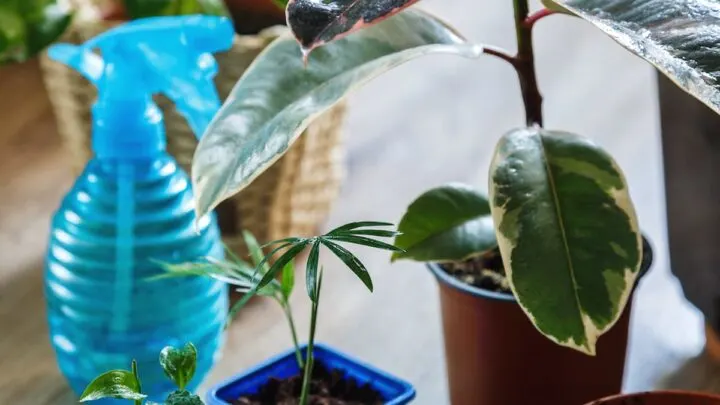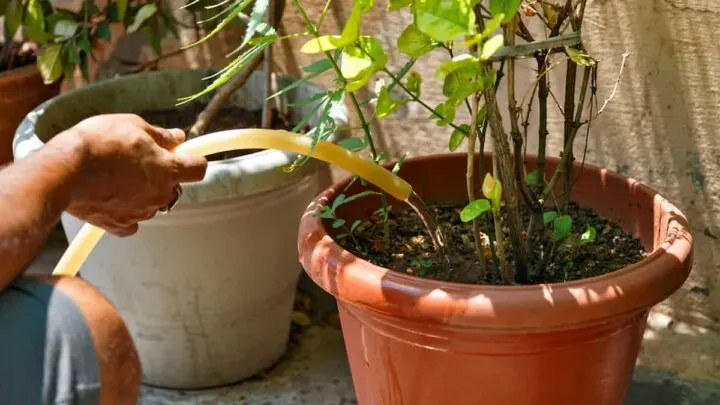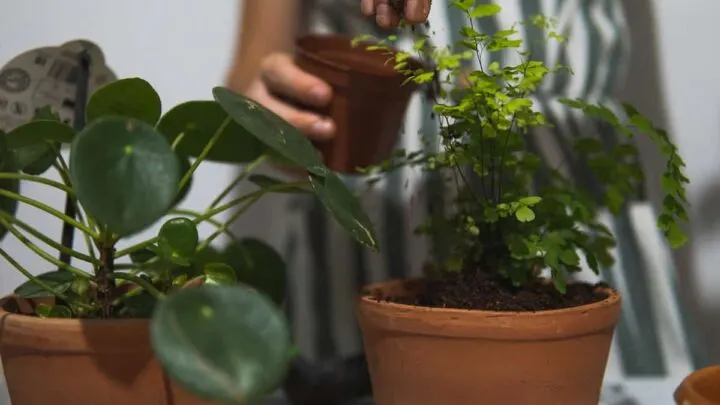Even if you’re familiar with the watering needs of the average houseplant, succulents don’t quite play by the same rules. They could be getting too much or not enough water, but the problem might not seem obvious to someone who doesn’t know what to look for. Do you (like so many people) need to know how to tell if a succulent is overwatered or underwatered?
An overwatered succulent will look almost bloated, with leaves that are soft and semi-transparent. An underwatered succulent will look deflated, with shrunken and wrinkly leaves.
Want to learn more about how to care for your succulents properly? Just keep reading!

How do you fix overwatered succulents?
While you’ll clearly need to slow down the watering schedule, you might need to try a few other strategies in order to fix an overwatered succulent. In most cases, however, an overwatered succulent should be able to recover on its own after being allowed to dry out fully.
- Whether or not your succulent is seriously overwatered, you should dig it out of the soil and let it rest on a sieve or some other breathable surface. The idea is to let the entire plant dry out for two to three days, including the roots.
- If the succulent is experiencing root, stem, or leaf rot, you’ll want to remove the affected areas from the plant. You’ll know this is the case if you spot brown/black areas that are shriveled and mushy. Even if you end up removing the entire root system to get rid of the rotten parts, you can still propagate a new succulent from the remainder of the plant.
- The soil may also have to be replaced if the roots are rotten. Ideally, you’d buy succulent soil instead of regular potting soil or make your own: 50% potting soil, 33% sand, and 17% pumice will do the trick.
- Once the succulent and the soil are sufficiently dry, you can re-plant the succulent, maintain a slower watering schedule, and keep an eye out for any further signs of overwatering.
When checking for signs of rot, don’t panic if you glimpse dark-brown, shriveled leaves near the bottom of the stem; they may just be old leaves in need of removal. Rotted succulent leaves will be mushy and can appear anywhere on the plant; those that are simply old will be located at the base of the stem and surrounded by healthy leaves.

How do you fix underwatered succulents?
Succulents are adapted to environments where drought is pretty much the norm. When the rain finally arrives, it comes down in buckets. With that in mind, here’s how to address an underwatered succulent.
- If your succulent has been underwatered, one of the best things you can do is completely soak the soil – keep going until you see water seeping from the drainage holes. As long as your succulent isn’t in really terrible shape, one or two heavy waterings should spruce it right back up.
- Sometimes a succulent gets so underwatered that it requires a “water therapy” technique. Gently remove the succulent from the soil, and shake any extra dirt from the roots. Then submerge the roots (not the stem or leaves!) into the water, and leave it there for one to three days.
- Once you see that the succulent is responding to the water therapy, remove it from the water and leave it to dry for at least two days; this reduces the risk of damage to the roots during re-planting. Remember that water therapy is more of a last resort than anything; even then, it might not work. That said, you might as well give it a shot if you’re trying to save a severely underwatered succulent!

How often should succulents be watered?
That depends on whether you’re talking about indoor or outdoor succulents. This handy guide should give you a general idea of how often to water your succulents:
| Succulent watering schedule | When the average high temperature is under 40° | When the average high temperature is over 40° |
| Indoor succulents | Once every 2 weeks | Once every 2 weeks |
| Outdoor succulents | Once every 3-4 weeks | Once every 2 weeks |
Since indoor succulents live at a steady temperature year-round, their watering schedule stays pretty consistent. On the other hand, outdoor succulents go dormant during the winter months; they won’t need as much water then.
When in doubt, check the soil with a bamboo skewer. You should let the soil completely dry out between waterings, so if there’s any sign of moisture when you pull the skewer out of the pot, your succulent isn’t ready to be watered yet.

Does sunlight influence how much water my succulents need?
Since direct sunlight will cause a succulent to dry out more quickly, you should consider that when establishing a watering schedule. Plus, it would help if you considered factors like how many hours of sunlight the plant is getting and how hot the surrounding environment is.
Succulents love sunlight – but not too much of it! Even though they come from desert-like environments, they usually grow near taller plants that can provide partial shade. Outdoor succulents should be placed in a similar setting for best results; indoor succulents can be moved in and out of direct sunlight as needed.
What’s the best way to water succulents?
Succulents love torrential desert rains, so you should use a watering can to give them as much water as the soil can soak up. Because succulents have very little tolerance for overwatering, it’s crucial that the excess water can drain naturally.
Most succulents are planted in pots, so you must ensure that each container has drainage holes. If the succulent is planted in the ground, simply water at a moderate rate until the water no longer instantly soaks into the soil.
The takeaway
Succulents may need less watering than most plants, but they still need just as much care! Overwatering is the main risk, but underwatering is possible too. Fortunately, succulents are resilient as well as beautiful. Armed with the right knowledge, you should be able to keep your succulents happy, healthy, and growing for years to come.

Hi there, my name is Allie and welcome to my blog; GareningWithAllie!
Much of what you see written here is just our personal experiences with gardening. Along with the content I write here, there is also a unique collection of gardening topics covered by some of our close friends. I hope you find everything you read here to be helpful, informative, and something that can make your gardening journey the most lovely experience ever! With that said, Happy Gardening!
